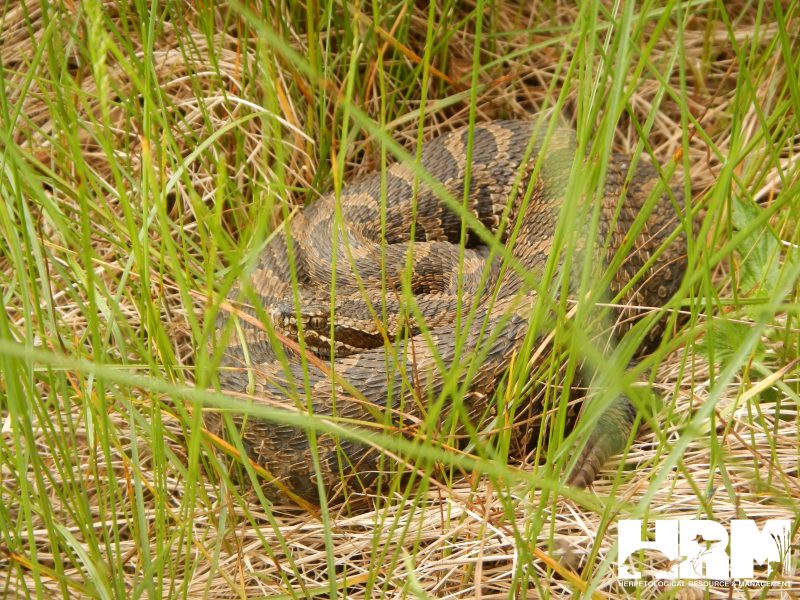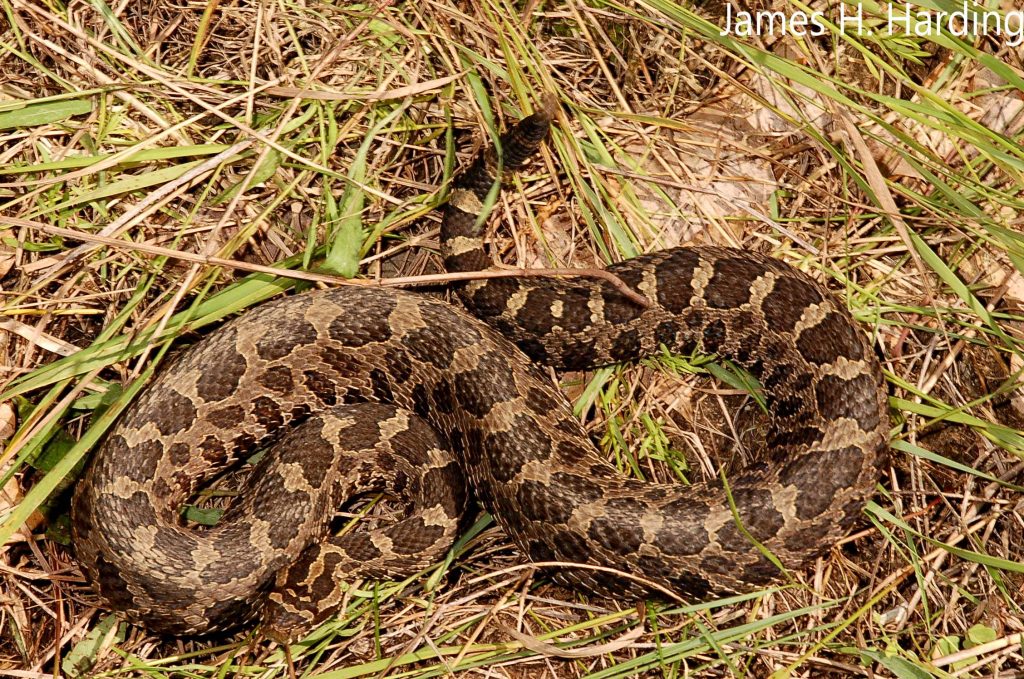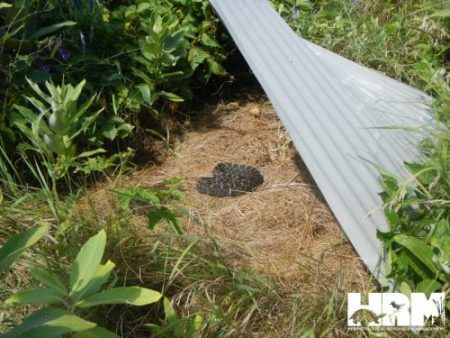Eastern Massasauga Rattlesnake Conservation
Federal Status
Effective as of October 31, 2016, the Eastern Massasauga Rattlesnake (EMR) is protected under the U.S. Fish and Wildlife Service list of Threatened Species covered by The Federal Endangered Species Act of 1973 (ESA).
- This act protects threatened and endangered species and their habitats by prohibiting take* and the trade in listed plants and animals, including their parts and product, except under federal permit.
- *to harass, harm, pursue, hunt, shoot, wound, kill, trap, capture, collect or destroy habitat.
- Additionally, the ESA requires the designation of critical habitat for listed species when “prudent and determinable.”
- At this time, USFWS has not listed defined critical habitat for the EMR.
- This act also mandates that a recovery plan for each Endangered and Threatened species be created and that post-recovery monitoring be conducted for de-listed species.


Long Term Conservation
The Eastern Massasauga Rattlesnake is considered an important bioindicator species, meaning that it acts as a gauge of environmental health due to its longevity, sensitivity to pollutants, and response to habitat disturbances. Protecting the EMR, protects both its high quality habitats and all other species within those communities. Long-term conservation of the species requires careful planning and the development of a recovery plan that addresses all of the following:
- Identifies the threats a species faces and determines the best course of action to halt or reverse these threats in a way that will bolster a species’ ability to survive and recover.
- Assembles a collective of partners and professionals that can contribute to the cause in an impactful and meaningful way.
- Maintains existing habitat and creates more suitable habitat through informed management and habitat restoration efforts.
Research
Statewide assessments of EMR have not been conducted in Michigan. Due to this and its cryptic nature, much is still not known about EMR populations in the state. Targeting future research to gain a better understanding of species natural history, distribution, range, and population dynamics will be a critical step in its future conservation. Additionally, the effectiveness of conservation and management activities should be studied to continue refining these practices and maximize protection efforts.
- HRM has extensive experience conducting rare species research


Outreach & Education
An important component of EMR conservation is a change in the public perceptions of the EMR. There is a deep-seated fear of snakes in our society, especially venomous ones, that extends back centuries if not millennia. Historically, the persecution of snakes was not only encouraged, but often rewarded. In addition to fear, many people are simply unaware of the problem.
- Provide information that demonstrates the value of protecting the species
- Mitigate the fear people feel through informative signage about the danger the species presents if encountered and the proper etiquette associated with encounters to reduce the risk.
Michigan Herp Atlas
State surveys have not been conducted for this notoriously cryptic species and their distribution is unknown in many parts of the state. Current as well as historic observations of EMR should be submitted to the Michigan Herp Atlas, a statewide database documenting herpetofauna in Michigan.

